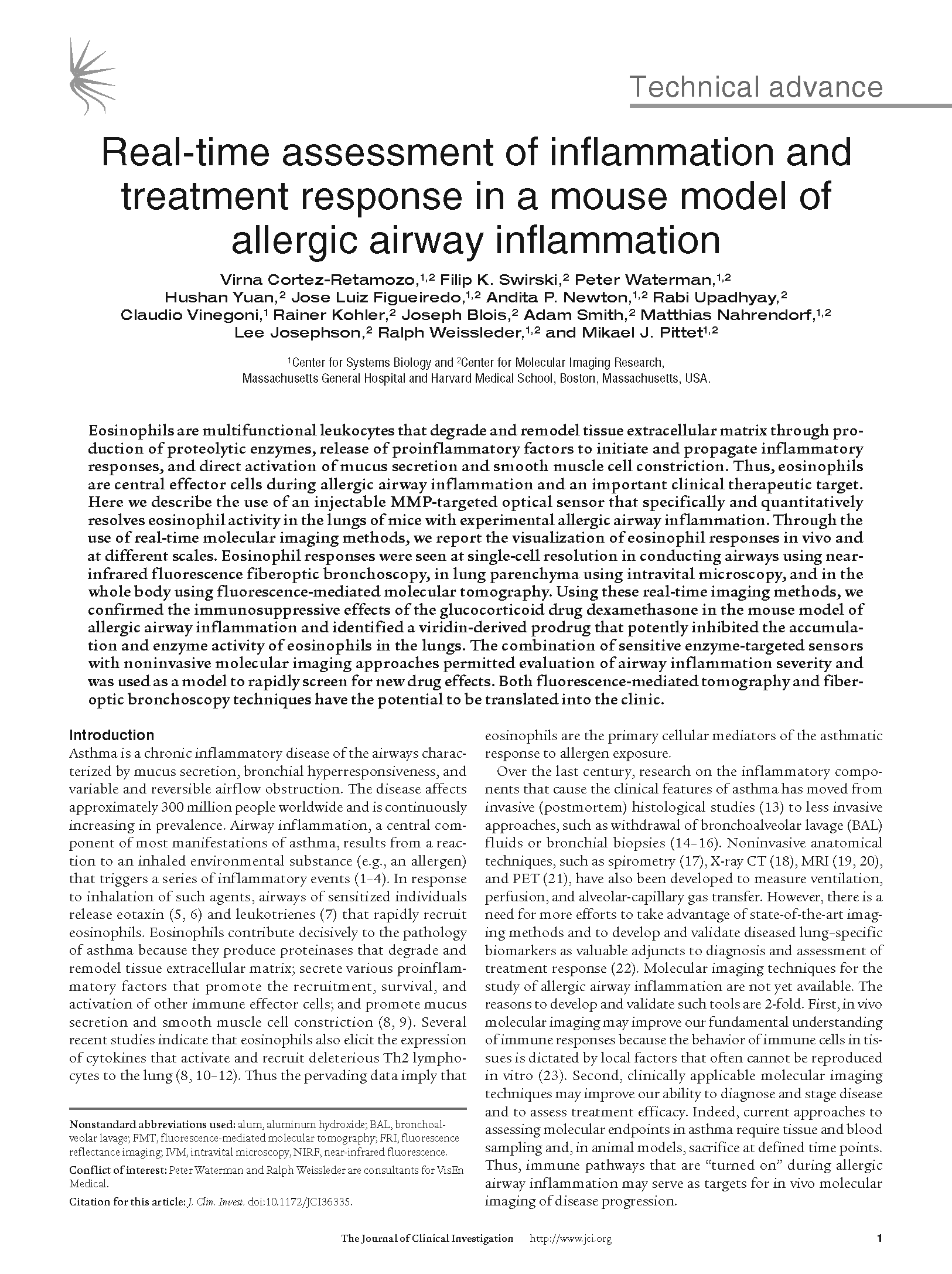Real-time assessment of inflammation and treatment response in a mouse model of allergic airway inflammation
Journal of Clinical Investigation
Abstract
"Eosinophils are multifunctional leukocytes that degrade and remodel tissue extracellular matrix through production of proteolytic enzymes, release of proinflammatory factors to initiate and propagate inflammatory responses, and direct activation of mucus secretion and smooth muscle cell constriction. Thus, eosinophils are central effector cells during allergic airway inflammation and an important clinical therapeutic target. Here we describe the use of an injectable MMP-targeted optical sensor that specifically and quantitatively resolves eosinophil activity in the lungs of mice with experimental allergic airway inflammation. Through the use of real-time molecular imaging methods, we report the visualization of eosinophil. responses in vivo and at different scales. Eosinophil responses were seen at single-cell resolution in conducting airways using near-infrared fluorescence fiberoptic bronchoscopy, in lung parenchyma using intravital microscopy, and in the whole body using fluorescence-mediated molecular tomography. Using these real-time imaging methods, we confirmed the immunosuppressive effects of the glucocorticoid drug dexamethasone in the mouse model of allergic airway inflammation and identified a viridin-derived prodrug that potently inhibited the accumulation and enzyme activity of eosinophils in the lungs. The combination of sensitive enzyme-targeted sensors with noninvasive molecular imaging approaches permitted evaluation of airway inflammation severity and was used as a model to rapidly screen for new drug effects. Both fluorescence-mediated tomography and fiberoptic bronchoscopy techniques have the potential to be translated into the clinic."
Full citation
For attribution in academic contexts, please cite this work as:
| Cortez-Retamozo, V., Swirski, F. K., Waterman, P., Yuan, H., Figueiredo, J. L., Newton, A. P., Upadhyay, R., Vinegoni, C., Kohler, R., Blois, J., Smith, A., Nahrendorf, M., Josephson, L., Weissleder, R., & Pittet#, M. J. (2008). Real-time assessment of inflammation and treatment response in a mouse model of allergic airway inflammation. Journal of Clinical Investigation, 118(12), 4058–4066. https://doi.org/10.1172/jci36335 |

Cortez-Retamozo, V., Swirski, F. K., Waterman, P., Yuan, H., Figueiredo, J. L., Newton, A. P., Upadhyay, R., Vinegoni, C., Kohler, R., Blois, J., Smith, A., Nahrendorf, M., Josephson, L., Weissleder, R., & Pittet#, M. J. (2008). Real-time assessment of inflammation and treatment response in a mouse model of allergic airway inflammation. Journal of Clinical Investigation, 118(12), 4058–4066. https://doi.org/10.1172/jci36335